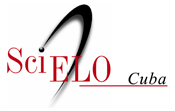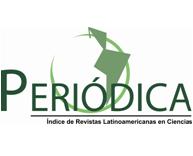DESIGN, ELABORATION AND CONTROL OF FLUID EXTRACT OF PARTHENIUM HYSTEROPHORUS L. "(BITTER BROOM)"
Keywords:
bitter broom, fluid extract, quality indixes, Parthenium hysterophorus, manufacturing technologyAbstract
Introduction:
Parthenium hysterophorus is a plant species to which anti-inflammatory and antimicrobial actions are attributed. In the Local Production Centers (LPC) in the country, a bitter broom tincture is made for dermatological conditions; however, a fluid extract is not available as an active pharmaceutical ingredient for the production of more bioavailable semi-solid formulations.
Objective:
To develop a fluid extract of bitter broom with physicochemical quality for pharmaceutical use.
Materials and Methods:
A 23 factorial, two-level design of experiments was carried out with three independent factors [particle size of the plant material, ethanol concentration (menstruum) and contact time between plant material and menstruum]. The response variables considered were: dry residue (%), relative density (g.cm-3), refractive index, pH, ethanolic content (%). The order of selection of the fluid extracts for their preparation was at random based on the experimental design.
Results and Discussion:
A greater variability for the extracts in the pH and dry residue parameters was observed; however, these are within the limits indicated in the National Formulary of Phytopharmaceuticals and Apipharmaceuticals (NFPA) for other plant species. There is also a coincidence in the refractive index, relative density and ethanolic content with what is described in the form.
Conclusions:
The quality specifications of the 8 formulations correspond to what is stipulated in the NFPA. The variant of choice, according to comprehensive results, is the one that uses 70% ethanol, 1 mm particle size and 12 h extraction time.
Downloads
Downloads
Published
How to Cite
Issue
Section
License

This work is licensed under a Creative Commons Attribution-NonCommercial 4.0 International License.




















